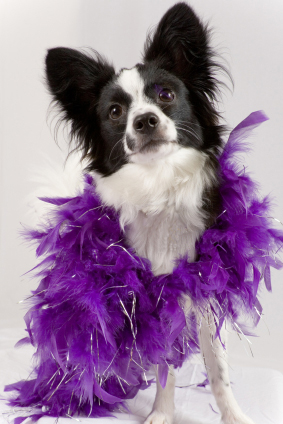You’ve done your homework, decided the time is right to get a puppy, and chosen the right puppy. Now it’s time to prepare yourself and your house for the new arrival. Yup, just like you would get ready for your new baby! Prepare a safe place for your puppy.You’ll likely want a crate for sleeping and an exercise pen (X-pen) or baby gate to create a safe containment area on an easy clean surface. I suggest having the crate in your bedroom at night and the pen near your main living area. If you don’t have an appropriate floor surface available, get a remnant of vinyl flooring from your home center or carpet store to use under your X-pen. You will use the X-pen as a long-term confinement area for times when you can’t watch the puppy for a few hours. You can use the crate at night, and for short periods like taking a shower or talking on the phone. Rid yourself of the mindset that a crate is punishment; by using it properly, it will instead become your dog’s favorite safe haven.
Puppy-proof your house.Any areas where your puppy will be permitted access should be thoroughly examined from puppy eye level for potential hazards. Remember your puppy is a baby, your baby, and you must keep that in mind and act accordingly (just like having a human baby, isn’t it?) Remove, contain, or block access to power cords or loose cables. Remove breakables. Clear off the coffee table. Put up any papers, books, remotes, or other items that could be chewed. Remove throw rugs and loose pillows. Pin up or tie back draperies if needed. Get your children in the habit of picking up their things and closing their bedroom doors. Having done all that, I still recommend that your puppy should never be outside of his pen or crate without direct supervision until he has learned proper potty and chewing habits.
Puppy-proof your yard and garage. There may be even more potential puppy dangers outside than in your house. If your yard contains any potentially poisonous plants you’ll want to remove them or block your puppy’s access to them. Use fertilizers, pesticides, and insecticides sparingly and cautiously. Garages often hold many substances which are poisonous to dogs; spilled antifreeze is a classic example. If your dog gets a foreign substance on their paws, they will instinctively want to lick it off. Never leave your puppy in the yard unsupervised. They can be injured or stolen, and unmonitored they can develop bad habits like barking and digging. You need to teach your puppy how to act in the yard as well as in the house. Make sure your fence is secure so your pup can run and play safely. If you don’t have a fence, you’ll need a long line (20-30’ heavy cord) to allow your pup more freedom while still maintaining safe control of him.
Plan a puppy schedule.You should take your puppy out to potty every time he wakes up, eats, drinks, plays, and about every hour or two in between if possible. Until the pup is 4-5 months old, he will need to eat 3 times a day. Choose a two hour window for morning, evening, and mid-day feedings; do not get lazy and simply leave a food bowl down all day long. You’ll also want to schedule several training and play sessions each day. Puppies have short attention spans, so keep these sessions to less than 5 minutes for the first month or so, but try to have a short “lesson” every hour or two.
Have some resources handy.You’re sure to have questions daily so get yourself some good dog books. If you have kids, I suggest this one: Living With Kids and Dogs… Without Losing Your Mind by Colleen Pelar. Other good references are After You Get Your Puppy by Ian Dunbar, and Positive Puppy Training Works by Joel Walton. You can also join my Start Puppy Training list on Yahoo. Check your area for positive puppy kindergarten classes as you will want to enroll as soon as possible.
When the big day arrives for the pup to come home with you, use these Tips For Success to get off to a good start.
Written by Cricket Mara, The Pawsitive Dog, LLC


